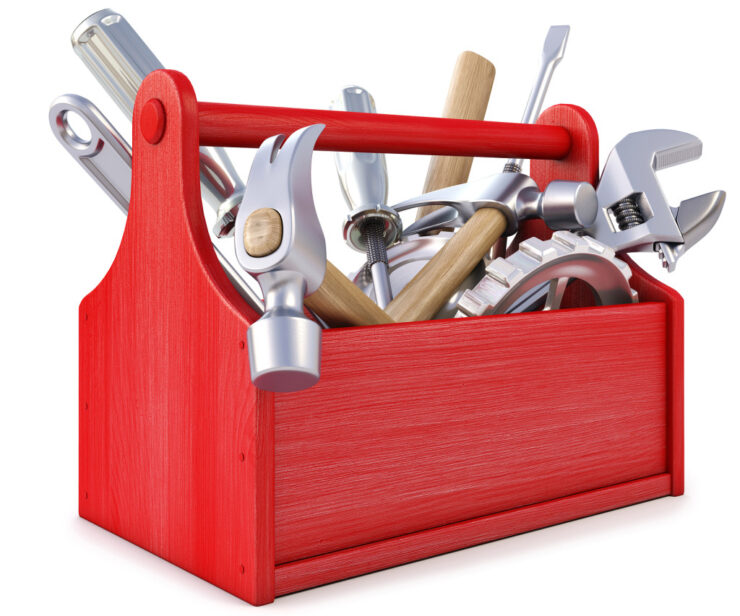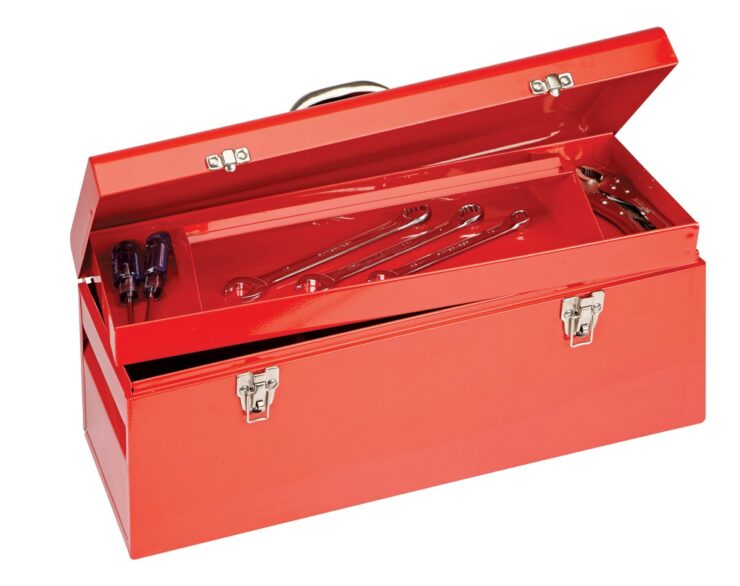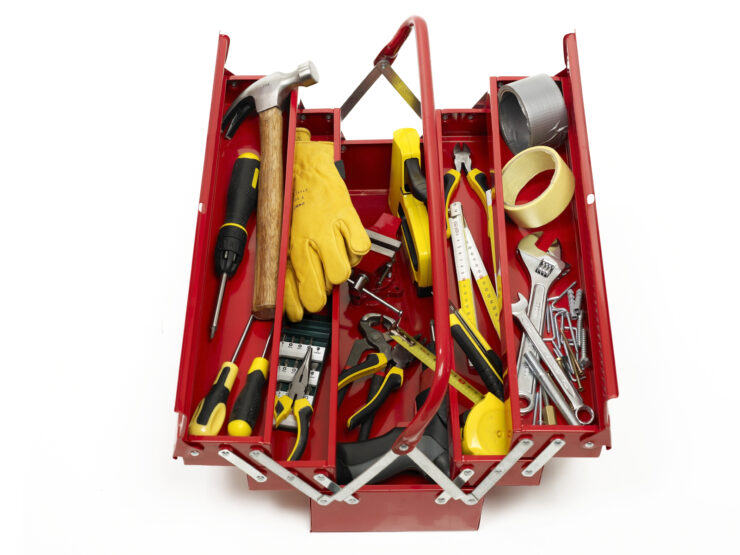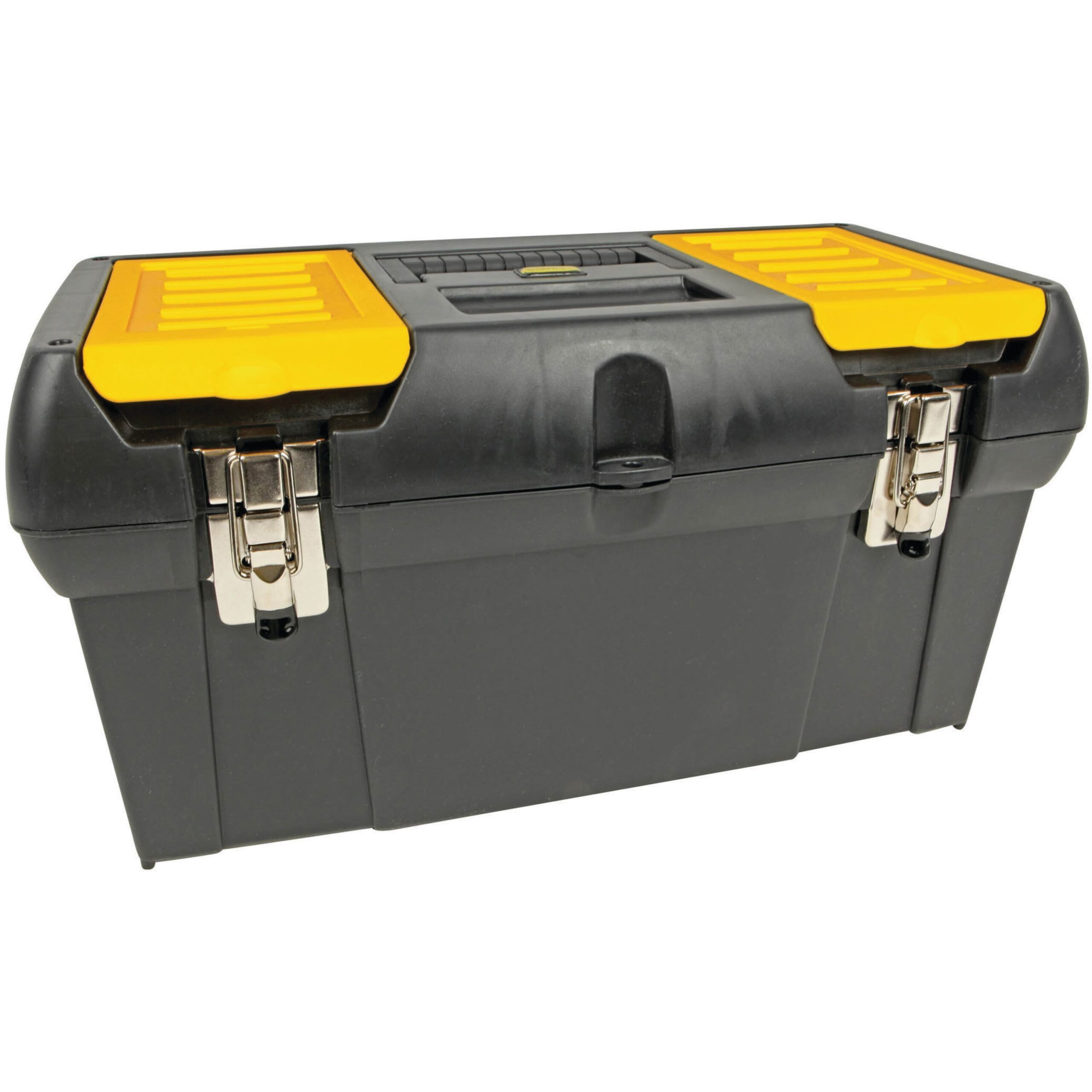If you like tools and manual work, you can significantly advantage from a tool organizer. In the following article, we will thoroughly learn how to organize a toolbox?
Professional users use such toolkits because they regularly do on-site jobs. But for the occasional repairman, these handy tool organizers can make your life and work easier too.
If you’ve got a workplace, you likely use wall-mounted, non-mobile tools racks or organizers to store your valuable tools. In addition to additional toolboxes for greater order in the work area.
Now handy tool organizers are not much diverse from any ordinary toolbox. Though, the tool organizer is more detailed in that they are usually bigger and chest-shaped.
Also, they have more sections to separate parts and tools. Being portable, also most have in-built wheels that make moving from one location to another easily.
One of the useful features of these organizers is that they have telescopic handles. These handles can be concealed when not in usage and aren’t annoying.
Some tasks simply need more parts and tools. If you’ve ever felt like your toolbox just isn’t enough, a tool organizer board may be the best idea. With these organizers, you can include bulkier, everyday tools.
What is a Toolbox?

A toolbox is a classic option for keeping tools organized in the workshop. Works well on the wall, keeping tools within reach, safe, and convenient.
The 86-piece metal toolbox, for example, is made to store all the tools and things we have so that it is not difficult for us to search for such a tool. This is also made for easy and practical tool transport. With a tool organizer box, you can easily carry all your tools conveniently and conveniently.
The work tools are so varied that it is often difficult to organize them. They are also sometimes easily lost or misplaced. Toolboxes solve this problem.
These are storage devices that contain all the tools in a single container. There are many types of toolboxes. It varies in the materials used, its main functionality, size, and design. Let us know about the different types of toolboxes in the following section.
How to Organize a Toolbox Properly

1. Use a compartmentalized toolbox, essential for order in the toolbox:
A toolbox without compartmentalization is like a large bottomless pit, into which tools can be dropped uncontrollably. And therefore, crazy to find the one you need when you need it.
Toolboxes such as steel cases or StoreBox plastic cases are the best solution for a well-organized toolbox. The compartmentalization allows dedicating a space to each type of tool, tool, or work accessory.
Including small supplies such as screws, nuts, or rivets, among others. This way, you will instantly know where what you need is and save valuable time.
For a more efficient working time, before considering how to organize a toolbox, consider purchasing a toolbox with good compartmentalization.
There are different types, and it will not cost you to find the most suitable one for your needs depending on the size and variety of tools and supplies that you usually use.
2. Place what you use the most as close to hand as possible, the key to optimizing work time:
The main reason to think about how to organize is to optimize your daily work. For this reason, you should always have those tools that you use most frequently at hand.
When you have a toolbox with more than one floor, in the upper one, the one that you access by simply lifting the lid of the box, you should keep the tools and supplies that you use the most.
3. Make a small sketch of your toolbox and label the compartments, useful to facilitate order:
This will help you organize the distribution of the tool in the space of the box. In addition, it will help you during the first days to know what you have saved in each space.
And where to put the tools back in it after using them. In a few days, you can do without it, but in principle, it is very useful.
Another easy way to keep your toolbox neat is to label the compartments. This is especially useful if you share a box with other people, whether they are co-workers or employees.
To do this, stick a label or sticker at the bottom of each compartment indicating which tools should be kept in it. Or in the drawers or lids on these so that it is visible at a glance.
You can put it with letters or visually with a drawing of it. You decide what is easier or more practical for you.
4. Eliminate all the tools that you do not use, key when considering how to organize an efficient toolbox:
To organize a toolbox in a truly useful way, it is important that you are willing to get rid of what is unnecessary. On the one hand, you must throw away those damaged tools that no longer fulfill their function. On the other hand, the one you use sporadically, transfer it to a secondary or auxiliary toolbox.
In this way, you will avoid unnecessarily carrying excess weight. And you will also avoid that what you do not use is a problem for the order of your tools.
5. Grouping tools with the same characteristics, necessary for speed of use and order:
It is basic, but it is still often overlooked. Grouping tools of the same type or class makes it easier to find the one you need at the right time. For this, you can put all the wrenches or all the screwdrivers in the same compartment, for example. So, you can find the size or caliber you need faster.
In addition, it is always interesting that tools of similar functions are placed together, although in different compartments. That is, all those used for the same task on the same side of each tray or in the same tray. But respecting the partitions according to their type.
This way, you will save a lot of time at work, avoiding having to lift trays and move the floors of your toolbox too many times.
6. Include a cloth in the upper part of the toolbox, necessary for better maintenance of your work tools:
So, you can clean it before putting it away. In this way, you will not only maintain order in the toolbox but also cleanliness. It is a great way to extend its useful life with the consequent monetary savings that this implies.
If you are considering how to organize a box of tools already used, take advantage and make a set-up of each one in a suitable way to keep them ready for work. So, you can take care of those that need to be oiled or cleaned. And have them ready to use when you need it.
Take these tips and advice into account when considering how to organize a toolbox because they will save you time and money.
Different Types of Toolboxes

When we talk about putting tools in order in our workspace, workshop, or garage, there are several types of toolboxes for easy and convenient storage.
Depending on the use you give to your tools and your workbench, it will be good for you to choose one option or another. Let us check out different types of toolboxes:
1. Mobile Trolleys
A mobile cart is a cabinet prepared to store tools of various sizes; they can be of various sizes, according to the needs of each person. As well as, they have wheels, so that you can move all the tools comfortably when necessary.
They are ideal toolboxes to place in the garage, in the workshop in case you are a professional. They are equipped with deep drawers for larger tools. Most of these storage systems include one or more drawer-shaped trays. So, you have quick and easy access to smaller tools such as wrenches or screwdrivers. Many of these have wheels and a security lock included.
2. Toolboxes
They are the most traditional tool storage system, the most common being made of light steel or resistant plastic. They are usually rectangular, generally with a top opening and a handle in the center that allows them to be transported effortlessly.
These toolboxes feature trays that extend out when opened to provide a clear view of the interior. The heaviest tools are organized in large compartments.
They usually include interior trays, one or more, depending on the height of the box, some of the trays and organizers are removable, so it would not be necessary to open the entire box when looking for a tool.
3. Tool Cases
It is a similar option to toolboxes. They are a practical solution to transport your work tools without taking up too much space when you are clear about the work you are going to do and which are the tools you need.
They are usually small and do not allow the storage of large tools. Many manufacturers sell briefcases that already include a small selection of tools and accessories for some of the basic DIY tasks.
4. Tool Belts
Tool belts are designed to carry tools with you during work. They have padded handles to improve comfort. Some are usually placed as a belt or as a shoulder strap to hang on the shoulder and always have the tools at hand.
5. Tool Bags
Tool bags are also a very comfortable way to transport tools and are an alternative to conventional toolboxes. You can store larger tools such as drills, saws, sanders, etc.
The internal pockets keep tools close at hand. Some have wheels and a telescopic handle to make transport even easier, and some so-called open-mouth designs give you easy and visible access to your tools.
Why it’s Important Having an Organized Toolbox?

A well-organized toolbox is essential for efficient work. It allows you to quickly find what you need at all times and avoid unnecessary expenses for having to buy a tool because you don’t know where you have put it.
That is why it is important to know how to organize and put it into practice. So, doing your work will be easier and faster, with less stress and nerves. You can have hundreds of tools in a cart, of all kinds, of all sizes.
Another advantage is the better organization of the types of tools. Thanks to having large drawers that, in turn, are separated into compartments, it is easier to organize the tools and then find them more quickly.
How much does a toolbox weigh? The smallest, and only with the essentials, can easily exceed 11 pounds. If the toolbox is that of a locksmith or a metal carpenter, among those necessary and that are mostly metal, we are already talking about this minimum.
Well, thanks to the tool carts, this problem disappears because they have wheels that allow you to move the cart from here to there with ease. This advantage is so usable by companies and professionals in workshops and works as individuals that it can change the classic.
And at the time of buying, which toolbox will we decide? In the market, there are many options, always about the use we have in mind. Let us know which toolbox is better? Metal toolboxes are made of aluminum or stainless steel.
Aluminum toolboxes are commonly for use on roads, trucks, etc. Stainless steel toolboxes are lighter, more durable, and more portable, also resistant to rust. They are for racing environments, residential garages, and commercial garages.
There is also the tool organizer cart, which is a suitcase-style and has wheels for easy portability. The plastic toolbox or organizer is known to be lightweight, practical, and durable. These toolboxes are resistant to breakage and corrosion.
They are non-corrosive and can be easily cleaned with soap and water. Some of these types are wall-mounted tool organizer style. Get a tool organizer box or cabinet large sufficient to store all the tools. Compact size is preferred that helps to save spaces, but you can also think of a larger container if necessary.
Collect all of the tools which you require the most and store them in a single box and then calculate the exact toolbox’s size you require.
Toolbox Price Range
Regardless of what your toolbox needs are, the best option would be a metal toolbox. Your toolkit will not only go a long way to improve your line of work or even for home repairs, but it will also come in handy for projects that can happen when you least expect it.
Usually, the basic price range of a toolbox starts from $25, and the higher price of the toolbox is $200.
Conclusion
We are sure now you have learned properly about the toolbox and how to organize a toolbox? For both home and professional use, the toolbox has become an indispensable item.
From the simplest and smallest to the most sophisticated and large, they constitute a useful resource for the organization and storage of our hand and power tools, as well as our accessories: from nails, screws, nuts, and a myriad of objects related to our work.
You will have been able to verify the usefulness of a toolbox both in domestic use and, of course, in the professional field. If you are already clear about your functionalities, the market has a wide range of containers for tools, among which you can make your most timely choice.
If you haven’t decided on a specific box yet, it doesn’t matter. Do not rush; let yourself be advised and visit an online store where you can explore through a wide range of tools boxes.
